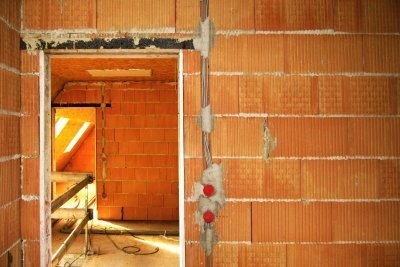How does underfloor heating work?
Underfloor heating is used by many builders for various reasons in the context of renovations or New buildings for a wide variety of reasons (energy saving, high comfort, even heat emission) favored. Underfloor heating works as low temperature heating because it is operated with low flow temperatures. A combination with solar heating or geothermal heat pumps increases the positive effect on the environment.

Underfloor heating is the easiest and cheapest way to implement new buildings. But renovation in older houses also allows retrofitting with innovative heating technology.
Underfloor heating works as low temperature heating
The technology for underfloor heating is just as diverse as the floor coverings suitable for it.
- You can opt for classic hot water underfloor heating or install electric underfloor heating. Aside from your personal taste, it's all a question of investment and running costs. You can also decide freely with restrictions when it comes to floor coverings.
- Electric heating, however, is not considered environmentally friendly, even if it is used as floor heating.
- You can find out how underfloor heating works in your specific case and with the respective local conditions from a heating specialist in your area.
- The advantages of underfloor heating are as follows: There is no visible radiator, the heat radiation is even and the good room climate helps asthmatics and those allergic to dust.
- With underfloor heating, the radiant heat rises upwards. It then also radiates from the ceiling and walls. This allows you to keep the room temperature lower and still not feel a lack of heat. This will save you money and energy.
Summer is going, winter is coming. It's bitterly cold outside and if you ...
Functional principle of hot water floor heating
- The pre-heating water is heated up in the boiler. Then it is pumped into the general heating network.
- The heated pre-heating water reaches the heating circuit distributor, which is equipped with a heating circuit control.
- This control activates the control valves of each individual heating circuit. Pipelines connect the individual heating circuits in the rooms.
- In each room, a thermostat (individual room control) controls the heating circuit control in the heating circuit distributor.
- The room thermostat compares the specified room temperature with the actual room temperature.
Possible uses for underfloor heating
- If you install an electric heater, you should only do this in small rooms (bathroom, kitchen) or if there is no alternative (office, hobby room).
- With hot water underfloor heating, it is important that you let it run continuously, even if you are on a winter holiday for a few days. It takes a long time for the heat to spread through the floor in the room and for a comfortable temperature to be reached.
- Although tiles, natural stones and ceramics are often the first choice for underfloor heating, it works with small restrictions, of course, suitable parquet (glued, floating relocated).
Underfloor heating should be equipped with control devices that work independently of brief heat radiation. The sun shines through great window into the living room, the heater otherwise switch off when the room temperature rises. If, on the other hand, you open a window for a long time, the heating will unnecessarily increase its output.
How helpful do you find this article?



